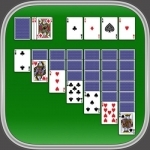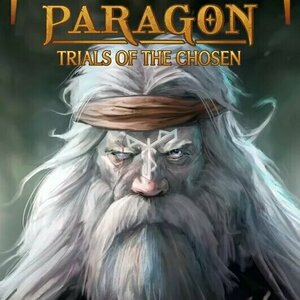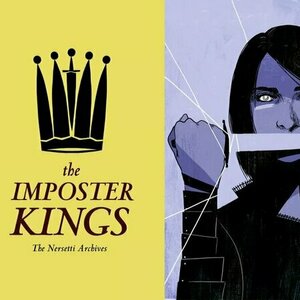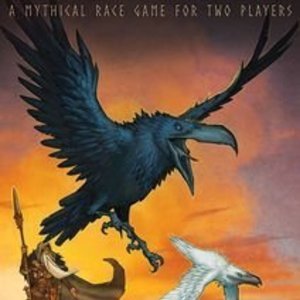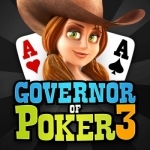
Governor of Poker 3 - Holdem
Games and Entertainment
App
Free Multiplayer Texas Hold’em Poker Do you want more than just poker? Do you want to join the...

MLB.com Home Run Derby 17
Games and Sports
App
2017 MLB Home Run Derby Stars Are Here! Crush home runs like the Pros! In MLB.com Home Run Derby,...
Purple Phoenix Games (2266 KP) rated Peak Oil Profiteer in Tabletop Games
Jun 11, 2021
Disclaimer: For this preview, we played the Tabletopia version of the game. The pictures you will see below are screenshots from my plays online. Also, I do not intend to rehash the entire rulebook, but rather provide a general overview of the rules and gameplay. For a more in-depth look, check it out when it hits Kickstarter! -L
Peak Oil Profiteer is an economic game of area majority/movement, network building, and simultaneous action selection in which players take on the roles of oil corporations competing to make the most money in an oil-rich country before corruption overtakes the land. There is a power struggle between 3 Factions, so play your cards right (literally) to come out ahead. To setup for a game, set the board in the middle of the table, populate the 3 Faction Tracks with their corresponding cubes, place the Corruption cube on 93%, create the Contingency deck (as described in the rules), shuffle the Blackmail deck, and give each player their 5 Action cards, starting Money, and 3 Pawns in their color. Flip all 9 Leader tokens face-down, shuffle them, and randomly give one to each player, placing the remaining Leader tokens face-up near the board.
The game is played over a series of rounds. At the start of every round, one card from the Contingency deck will be revealed/resolved. Contingency cards will either be Events (that will most likely alter the rules for the current round), or Consultants (to be ‘hired’ by an individual player for special abilities). Once the Contingency card has been dealt with, the round moves to the next phase: Action Selection. All players have the same 5 Action cards, numbered 1-5, available to them every round. Players will select one of their 5 Action cards and place it face-down in front of them. Then, in numerical order, all Action cards will be resolved. When your Action number has been called, you will reveal your Action card, perform the corresponding action, and take the card back into your hand. Once all players have performed their Action for the round, check the Corruption track – if it has reached 100% then the game ends, and if not then the game moves to a new round.
The 5 Actions available to all player are: 1. Networking, 2. Sell Weapons, 3. Buy Drilling Rights, 4. Sell Oil, and 5. Contingency. Networking allows you to collect Blackmail in order to win control of Faction Leaders. You may only Sell Weapons to a Faction if you control at least one of its Leaders. You will earn a set amount of Money, and a new Troop cube will be added to the game board. To Buy Drilling Rights from a Faction, you again need to control at least one of its Leaders. Pay for the rights, and then add one of your Pawns to that region of the board. Once you’ve got Drilling Rights, you can Sell Oil. Remove your Pawn from the corresponding region, and collect the appropriate amount of Money. And lastly, Contingency allows you to either ‘hire’ a Consultant, or perform an extra action as a result of an Event.
The amount of Money that you pay/earn for each of the actions is dictated by the Faction Tracks. For example, the price of Weapons decreases as Factions get more Troops on the board, which means you won’t earn as much selling to a Faction with lots of Troops in play. You have to time your Actions wisely in order to maximize your profit! If, at the end of a round, the Corruption track has reached 100%, the game ends. Players count up their Money, and the player with the highest earnings is declared the winner.
Although the theme isn’t something that would normally appeal to me, I have to say that Peak Oil
Profiteer is a solid game. The gameplay is straightforward, the player interaction is competitive but not combative, and the strategy keeps you engaged all game. The ultimate goal is to earn the most Money, and the Faction Track creates sort of a “commodity speculation” type mechanic to the gameplay. The costs vary depending on the Faction Track, and it can be manipulated by all players. That in and of itself creates some fun player interaction because the Faction Track affects all players. Doing something to block an opponent now may come back to bite you next round. Another neat element about Peak Oil Profiteer is that players select their Actions simultaneously, and they are then resolved in numerical order. Depending on where your turn falls in the round, you might be able to do just what you had planned, unless an opponent went before you and changed the game layout. There is an amount of uncertainty that forces players to adjust their strategy on the fly and adapt to the current situation.
I will say that resolving Actions in numerical order does kind of add an element of Action Programming, if you will. Once you have selected your Action this round, you are locked in. No matter what happens before your turn, you must perform your selected Action if at all possible. It creates some neat strategic opportunities, but at the same time, can feel like you’ve been blocked out. Just something to consider! Normally, I would touch on components, but as this was a Tabletopia version of the game, I can’t really do so. I will say that the art style and card/board layouts online are thematic and immersive. If the physical version of the game looks anything like this digital version, it’ll be a good looking game! One component that I especially appreciated was that each player gets a Player Reference/Round Reference card. It gives you the information you need without being too wordy, and it stops you from having to refer back to the rule book every turn. So big thanks from me for that!
Having never played the original Peak Oil game, I have to say that Peak Oil Profiteer made a good impression on me. It’s fast to teach and learn, engaging, and strategic enough to keep you thinking. The fluctuation of the Faction Track, and the order of Action resolution add elements of uncertainty and ‘luck’ (if you will) that keep the game from having a clear run-away winner. Everyone is in it until the very end, and the race for the most Money is a nail-biter for sure. If you’re looking for something interactive but not too confrontational, while also putting your strategic chops to the test, consider backing Peak Oil Profiteer on Kickstarter!
Purple Phoenix Games (2266 KP) rated High Noon in Tabletop Games
Mar 1, 2021
Disclaimer: We were provided with a copy of the game for the purposes of this preview. This is a finalized production copy, and the components you see pictured are those you will receive in your own game! Also, we were provided the 4-player starter set – the game is playable with more people when expansions are included. -L
High Noon is a game of action points, grid movement, and fighting, played over a series of 12 rounds, in which players take on the roles of various posses in the Wild West who are battling to collect the most gold in town. To setup for the game, each player selects a posse and receives their corresponding deck of cards, character sheets, and minis. Character sheets are placed in front of each player, and a red Poker Chip is placed on each to track the Health of each character. Setup the map tiles as shown in the rulebook, or players may create their own map layout using at least 7 of the map tiles. Shuffle the Loot decks and place them to the side within reach of all players, and create a pool of Gold tokens and Poker Chips. The Loot Crate tokens are shuffled and randomly placed on the green squares of the board, and then players will take turns each placing 3 more Loot Crates following certain placement restrictions. All minis are placed on their starting squares on the map tiles, players draw 6 cards from their own posse decks, a starting player is selected, and the game is ready to begin!
Each turn is broken into 3 phases: Movement, Action, and Draw Cards. During the Movement phase, players may move any/all of their minis on the map up to the Speed value listed on their respective Character Sheets. Movement is always in straight lines, or can be diagonal. Diagonal movement costs 2 squares of movement though, so keep that in mind! The map tiles have various obstacles as well, and navigating over obstacles costs 2 squares of movement as well. After a player has moved their minis, they now move to the Action phase. In this phase, each individual character of your posse is allowed one action: Play a Card, Loot a Crate, Loot a Body, Equip an Item, Pass an Item, or Drop an Item. To Play a Card, select a card from your hand, perform the action listed on it (either an Attack or Special Action), and discard it. It is important to note that a character may only ‘Play a Card’ if you have one of their cards in your hand! Each posse deck is made up of action cards for the various posse members – so you might not always have a card in hand for every character. In order to Loot a Crate or Loot a Body, your mini must be in an adjacent square to the item to pick it up. Any Loot that is picked up is placed with the corresponding character’s Character Sheet – each character may only hold a specific amount of Loot! Certain Loot items need to be equipped, and thus you may make that character equip an item in lieu of any other actions this turn. Loot cards have various uses: Weapons, Consumables, or Ammunition. These can provide extra Attack damage, Healing powers, or Defense bonuses to characters. Loot is highly coveted!
Passing an Item allows you to hand off Loot between posse members, or Dropping an Item (a free action) removes that Loot from your Character and is discarded. After all of your characters have acted (if possible), your turn then moves to the Draw Cards phase. You will draw 3 cards from your posse deck. Once you have 12 cards in hand, you must discard 3 cards in order to draw 3 cards. You must always draw 3 cards at the end of your turn. The game then proceeds to the next player, and continues as such until the end of 12 rounds. So how do you win? By collecting Gold, of course! And the way to do that is by attacking your rival posses. Any time one of your characters deals at least 1 point of damage to an opponent, you collect 1 Gold token. Any time you kill an opposing character (reducing their Health on their Character Sheet to 0), you collect the amount of Gold listed on the deceased character’s Character Sheet. At the end of 12 rounds, the player/posse that has amassed the most Gold is the winner!
Ok, so I know that seems like a lot, but I promise that the gameplay is pretty streamlined once you actually get going. The Movement phase is very straightforward and simple to perform. The Action phase is logical, and the options are clear. Drawing cards is a no-brainer at the end of your turn. The real nitty-gritty part of play is in the strategy. You earn Gold by dealing damage or killing opponents, so naturally Combat is where the crux of the gameplay is centered. All characters are armed with weapons that have finite range. You may only ever attack opponents who are in direct Line-of-Sight – in a straight line away from you, or diagonally, each square costing 2 squares of range. If an opponent is not in either of those 2 directions from your character, you may not attack them! So movement and character placement becomes a lot more strategic and important in gameplay. There is also the concept of obstacles impeding the attacks of players. It makes logical sense, and I feel like the damage adjustments to incorporate obstacles feel realistic. When a player is attacked, they may choose to play a card from their hand to defend against some of the damage being dealt. As mentioned above, though, a character may only ever play a card that is specified for him! (Ex. Col. Rodgers cannot defend if you have no Col. Rodgers cards in hand) Are you willing to risk your only Leroy Gang card to defend 2 points of damage instead of using it to attack for 3 points of damage on your turn? You have to figure out exactly how to play the combat, and that strategy can turn in the blink of an eye.
Honestly, for me, the trickiest part of the gameplay was keeping track of which character acted each turn. I ended up grabbing some of the extra Poker Chips and placing them on a Character Sheet once he had acted each turn. Not necessarily a knock on the game, just on my inability to control multiple characters I guess! Let me touch on components for a minute. The copy of the game that I received is a finalized production copy. There may be some updates to the rulebook, but component-wise, what you see is what you get. And what you get is pretty great. The posse and Loot decks are nice sturdy cards, and the cardboard chits (Poker Chips, Loot tokens, and Gold) are thick, if not a little too small for my taste. The Character Sheets are big, easy to read, and clear in their iconography. The map tiles are some nice thick card stock-like material that definitely will hold up to numerous plays. And the minis. They are so cool! Each posse has a designated color, and they are just fun to play with and move around the board. At first, I found it difficult to tell certain posse members apart, since some of the minis look alike. But then I realized that each mini has a number of nicks in the base to help players identify which mini corresponds to which character. That was definitely a lifesaver for me in my plays. The components make this feel like a luxury game, and that helps make it more exciting to play!
So all in all, how does High Noon fare? In my opinion, pretty well! The map grid and combat are reminiscent of Dungeons and Dragons, but with a Wild West theme that feels novel and unique. And according to the box, it can be played with more than 4 players if you incorporate expansions into the base game. So you can really turn this into an all-out Western showdown! The gameplay is smooth, the strategy ever-changing, and the concept and rules are fairly simple to learn and teach. High Noon definitely gets some high marks from me!

Neuroshima Hex
Games and Entertainment
App
AWARDS: "iOS Game of the Year" Game Shark "Best Card/Board Game - Runner Up" TouchGen PRESS...
Purple Phoenix Games (2266 KP) rated Paragon: Trials of the Chosen in Tabletop Games
Sep 18, 2021
Paragon: Trials of the Chosen (which I will lovingly refer to as Paragon from here on out) is a fantasy deck construction fighting card game where players will be outfitting their chosen avatars with awesome gear and abilities and sending them to battle against other players’ avatars. All players will know EXACTLY what is in their draw deck AND in what order because they have constructed it card by card and the deck will never be shuffled. Intrigued?
DISCLAIMER: We were provided a copy of this game for the purposes of this review. This is a retail copy of the game, so what you see in these photos is exactly what would be received in your box. I do not intend to cover every single rule included in the rulebook, but will describe the overall game flow and major rule set so that our readers may get a sense of how the game plays. For more in depth rules, you may purchase a copy online or from your FLGS. -T
To setup, each player chooses two avatars with whom they will play. Avatars belong to one or two different Disciplines, which allows players to construct their deck with Discipline-specific cards to be used during the game. As part of setup, each player will choose 20 cards from the gigantic deck of Equipment and Ability cards with which they will form their deck for play. Per the rules, each player will then place their chosen avatars and ordered decks in front of themselves along with a blue 1d10, the green 1d10 (all set to 1 to begin), and pile of Hearts tokens. Players draw their starting hand of five cards and the battle can begin!
The green 1d10 notates the round number, and the blue 1d10 per player represents their current Energy. To bring cards into play a player will spend the printed amount of Energy and track this on their 1d10.
Each round is played over several phases. The game is designed to play to 10 rounds, but players may play past 10 while keeping the round tracker and Energy static for all rounds after 10. The first phase is the Start Phase, and acts as a maintenance phase where players will activate any “Start Phase” effects from played cards, ready all exhausted cards, increase all the d10s, and draw the top card from their deck. Should a player be unable to draw a card during this phase due to the draw deck being empty, they immediately lose the game.
The second phase is the beefy Main Phase. This is where all the action happens. During this phase, players will take turns playing cards until both players have passed. On a turn a player will have the choice of five actions: Play a Card, Trigger an Activated Effect, Declare an Attack, Channel Energy, and Pass. To Play a Card the active player will pay the cost (in Energy) printed on the card and bring it into play exhausted. Cards brought into play this way will be attached to one of the avatars and act as an equipment or new ability, as long as the card played matches the Discipline of the avatar to which it is attached.
To Trigger an Activated Effect, the player will need to satisfy any qualifying conditions of the activation, which are printed on the card. These abilities can vary wildly and add immense strategy to play.
Once a player believes they have enough firepower attached to their avatars they may instead Declare an Attack by announcing their target and exhausting the card that is attacking. It is here that Paragon strays from the norm. Instead of damage simply being dealt to the opponent, the player may engage in a volley of playing Instant cards from hand (and paying their Energy costs) to add to the card stack. This is important, as the stack is then resolved in reverse order of play. So the last card to be played on the stack will be resolved first. This can result in attacks being nullified or shielded before they even proc. Sneaky and wily players will certainly use this phase wisely to draw out cards from their opponents’ hands. Once the stack is built, it is resolved and damage is calculated.
Players may instead elect to Channel Energy by exhausting one of their avatars to add 1 Energy to their pool. This may be repeated as long as the other avatar is available to be exhausted.
Lastly, and most easily, when players have no other actions they can or wish to complete, they may Pass in order to close out the round of phases.
When both players have Passed, the End Phase begins, and acts as another maintenance cleanup phase to ready players for the next round. This includes resolving any “End Phase” effects and increasing the round d10 by 1. The game ends once a player’s two avatars have been defeated or a player is unable to draw a card from their draw deck. The winner then boasts mightily in the face of their competitor and spews taunts and rematch challenges.
Components. This one is simple. Paragon has a giant stack of cards, a few d10s, and some wooden Heart tokens. The tokens are double-sided with a 1 printed on one side and a 3 on the other. These are obviously to track HP loss, and are fine. The 3d10 in this version are entry-level, and I will probably bling it out with some d10s that are more themed. The cards. Okay, I will certainly be sleeving this game. I want to keep my copy in excellent condition for as long as I can. In the last photo here, I splayed out the avatars that are currently included, and all the other cards stacked are the equipment and abilities to be attached to the avatars. I have no problems with the components in Paragon (I just want to get more exciting d10s to use).
There really is an insane amount of choice and customization that can be had in constructing a deck for the chosen avatars, and that is precisely why I mention in the opening that I have yet to understand all the components: how will I ever be able to perfect a combination that speaks to me and works with my style when I have about a zillion options available? I know many gamers will salivate over the amount of deliberation and possibilities contained in the box, and after several plays, I find myself weighing options in my head throughout the day. When you think about a game throughout the day and how you will attempt to play it next time, I feel that is a sign of a truly great game for you.
This is certainly not for everyone, but it definitely is for me. I truly cannot wait to try out different combinations, strategies, and deck configurations each time I play. I can also see Paragon being ripe for multiple expansions, with new avatars representing new Disciplines, or adding in expansion material that is themed for different IPs or historical eras. Well, I guess it is time to pick up a part-time job to fund my Paragon expansions.
If you are like me and enjoy games that offer near-infinite possibilities and the true feeling of never playing the same game twice, then Paragon needs to be on your shelf. The rules are easily-digestible, games take 30 minutes once you are familiar with it, and there are a ton of unique cards included in this box. Purple Phoenix Games gives Paragon an excited 5 / 6. I really think that with more plays and tweaks to my copy (maybe an expansion or two thrown in) this could eek up to a 6 and earn a Golden Feather Award from me. It is smooth, exciting, and just oozing with customization that many gamers are going to absolutely love. Go find yourself a copy and get it to the table right away!

Color Concrete Garden Projects: Making Your Own Planters, Furniture and Firepits Using Creative Techniques
Michael Snyder and Nathan Smith
Book
In Color Concrete Garden Projects, authors Nathan Smith and Michael Snyder offer step-by-step colour...
Purple Phoenix Games (2266 KP) rated The Imposter Kings in Tabletop Games
May 1, 2021
DISCLAIMER: We were provided a copy of this game for the purposes of this review. This is a retail copy of the game, so what you see in these photos is exactly what would be received in your box. I do not intend to cover every single rule included in the rulebook, but will describe the overall game flow and major rule set so that our readers may get a sense of how the game plays. For more in depth rules, you may purchase a copy online or from your FLGS. -L
The Imposter Kings is a card game for 2-4 players in which players are attempting to gain and maintain control of the throne, accumulating a total of 7 points to win the game. There are some slight rules variations between 2-, 3-, and 4-player games, but the overall gameplay is the same. This review will focus on the 2-player rules. To setup for the game, assemble the deck as described in the rules for your chosen player count. In a 2-player game, the deck is comprised of 18 cards. Each player is given a King card, and one player’s will be the True King. The True King merely determines the first player for the round. Shuffle the deck and deal 8 cards to each player. There will be 2 cards leftover, and those will go into the center of the play area, one face-up and one face-down. This lets the players know which card is not in either players hand, as well as a random unknown card in neither players’ hand. Each player will select a card from their hand to be their Successor, and will place it face-down next to their King, and they will also select one card from their hand to discard face-down. The game is now ready to begin!
On your turn, you will play any card from your hand to the Court (play area) that is of an equal or higher value than the card played previously. The last-played card to the Court is considered to be on the Throne. All cards in Imposter Kings are numbered 1-9, and each card has an associated special ability. Once you play a card to the Court, you may/must use the ability (if optional/mandatory). These special abilities can alter the Court and gameplay by Disgracing cards (flipping them face-down to ‘reset’ the number line), swapping cards with other players, playing a lower-numbered card on top of a higher number etc. The round continues in this fashion, with players alternating, until one player is no longer able to play a card to the Court. That player loses the round, and the winning player receives a number of points, depending on certain aspects. The deck is reshuffled, the True King is passed to the loser of the round, and a new round commences. The first player to reach 7 points is the ultimate winner!
That details the basics of the gameplay, but there are a few special things to keep in mind. Certain cards will force players to play a card to their Antechamber – face-up in front of them. If ever you have a card in your Antechamber at the beginning of a turn, you must play it to the Court, regardless of its value. This can be a good strategic way to trap your opponent into playing a specific card on their next turn! Sometimes a card will need to be Condemned – it is then placed face-down in front of you, and then removed from play on your next turn. Another good way to eat up an opponent’s turn! If you ever get to a point in the round when you are unable to play a card to the Court, you may choose to use your King power – it allows you to flip your King over to Disgrace the card currently on the Throne, and take your Successor into your hand (hopefully giving you a chance to keep playing in the round!). However, there is an Assassin card in the game!! If you have the Assassin, you can reveal it when your opponent decides to use their King – thus assassinating them and immediately winning the round. Lots of tricksy ways to make sure you end up on the Throne!
So all in all, how does The Imposter Kings hold up? Fairly well, actually. For being a simple and relatively fast card game, there is a lot of strategy required for success. You have to decide which cards/powers to use when, while also trying to deduce what your opponent has in their hand. Can you trap them and force the round to end? Or have they kept a dark horse in hand for just this situation? There is a lot more to The Imposter Kings than meets the eye, and that makes it a fun challenge. The first time I played this game, it reminded me of a similar game by ButtonShy titled Hierarchy. The concept and gameplay are similar, but the biggest difference is that The Imposter Kings can be played with 3 and 4 players. That adds another element of strategy/chaos to the game, as there are more cards to deduce, more opportunities for the Court to change between your turns, and just more strategy in general. Hierarchy is strictly a 2-player game, but The Imposter Kings allows you to play with more people. With higher player counts, new and unique cards are added to the starting deck, offering even more abilities and strategic options for play. The gameplay scales with player count, and that keeps it engaging.
Let me touch on components for a minute. This is a retail version of the game, and the production quality is very nice! The game comes in a nice small box, and the deck of cards is sturdy in hand. The artwork is interesting, the text is clear, and the cards are color-coded based on their value. The coloring really helps with quick visual identification of what cards are in play. The game also comes with some reference cards for the various abilities, and those were much appreciated. The rulebook had a couple of areas of ambiguity, but watching the videos on the BGG page for The Imposter Kings helped answer any questions I might have had. All in all, good production quality!
So as you can probably tell from this review, I generally like The Imposter Kings. The gameplay is strategic, engaging, and its 3-4 player variants offer some unique twists that the 2-player just cannot handle. This is a game that I can see myself bringing out when I have newer gamers at my table. The gameplay is simple, yet strategic, and it is not overwhelming to learn or play. It definitely makes players think, and even now I’m thinking about what strategy I might try next game. If you are looking for something relatively simple, yet surprisingly strategic, consider checking out The Imposter Kings. Purple Phoenix Games gives it a royal 8 / 12.
Purple Phoenix Games (2266 KP) rated Odin's Ravens (second edition) in Tabletop Games
Sep 8, 2021
Odin’s Ravens is a light game of strategy and hand management in which 2 players are racing to be the first of Odin’s ravens (duh) to travel around the world. To setup the game, shuffle the land cards and place a line of 16 cards directly between the two players. Land cards are divided into two halves, each depicting a different landscape. This line of Land cards acts as the route around the world for both Ravens. Players choose one end to be the start/finish lines, and place their Raven meeple on their corresponding side of the starting Land card. During play, the Ravens will travel down their side of the Land cards, and will switch to the opponent’s side for the flight back to the finish. Each player receives a set of 25 Flight cards and 8 Loki cards, to be shuffled and kept separate from each other. Both players then draws 5 cards into their hand, in any combination of Flight and Loki cards. Choose a starting player, and the game is ready to begin!
On a typical game turn, you will play as many cards from your hand as you want, either Flight cards, Loki cards, or combinations of the two. Flight cards allow you to move your raven down the path. In order to move your raven, you must play a Flight card that matches the landscape of the next Land card on your path. (Ex. if the next space is a Forest, you must play a Forest Flight card). If you have no Flight cards in hand that match the next card on your path, then you may discard any two flight cards of the same type to move forward one space. Loki cards allow you to perform Trickery actions, which alter the flight paths of both players. Some actions include rotating Land cards, moving ravens forward/backward a number of spaces, swapping Land cards, etc. It is important to note that once a Loki card has been played, it is removed from the game entirely – you only have 8 Loki cards total, so use them wisely! After you have played all the cards you wish on your turn, you will then draw 3 cards (in any combination of Flight/Loki cards), and end your turn. You may never have more than 7 cards in hand. Play continues in this fashion until one player has reached the end of their flight path – resulting in victory!
Seems simple enough, right? Well, it is and it isn’t. The overall gameplay itself is simplistic – draw and play cards to move your raven towards victory. The implementation of Loki cards adds a strategic twist to the game that keeps each player on their toes. Flight cards alone leave you at the mercy of the luck of the draw, but Loki cards give players a little more control over their game strategy. They provide ways to alter the flight path to benefit yourself or inhibit your opponent at various points throughout the game. Add in the fact that each player only has 8 Loki cards total, and that ups the strategy as well . You only have a finite amount of trickery to pull, so you have to be sure to use it at the perfect time. Was your opponent able to counteract your attempted trickery, or did you execute it perfectly for them to fall into your trap?
The components of this game are pretty standard and straightforward. The cards are good quality and are easy to manipulate, and the wooden raven meeples are big and chunky. Nice and simple! The artwork of the game, although clear and effective, is pretty basic and leaves much to be desired. It is clear in the way that it is easy to identify each type of landscape and determine the actions of Loki cards, but overall it feels a little too simplistic and not as immersive as it could be.
Odin’s Ravens is a decent 2-player game, although not my favorite. If I needed something simple, light, and relatively fast for 2 players, it is definitely one that I would pull off the shelf. But I have other 2-player games that I would rather play instead. Will it stay in my collection forever? Hard to say, but for the time being it has a spot on my shelves. If you are looking for something that is relatively simple, but has opportunities for strategy, check out Odin’s Ravens. Purple Phoenix Games gives this one a flighty 13 / 18 – you just gotta keep your eye on that Loki…
